Hibernaculum
The wall suggests two distinct states of being – one more remote and controlled, the other more alive and vibrant … as the “wrong” or back side fans out, making its presence more pronounced, the front side curves inward as if the wall is turning itself “inside-out”, expelling the limits of its own boundaries. (Joan Borsa, “Susan Shantz: hibernaculum”, excerpt from catalogue)
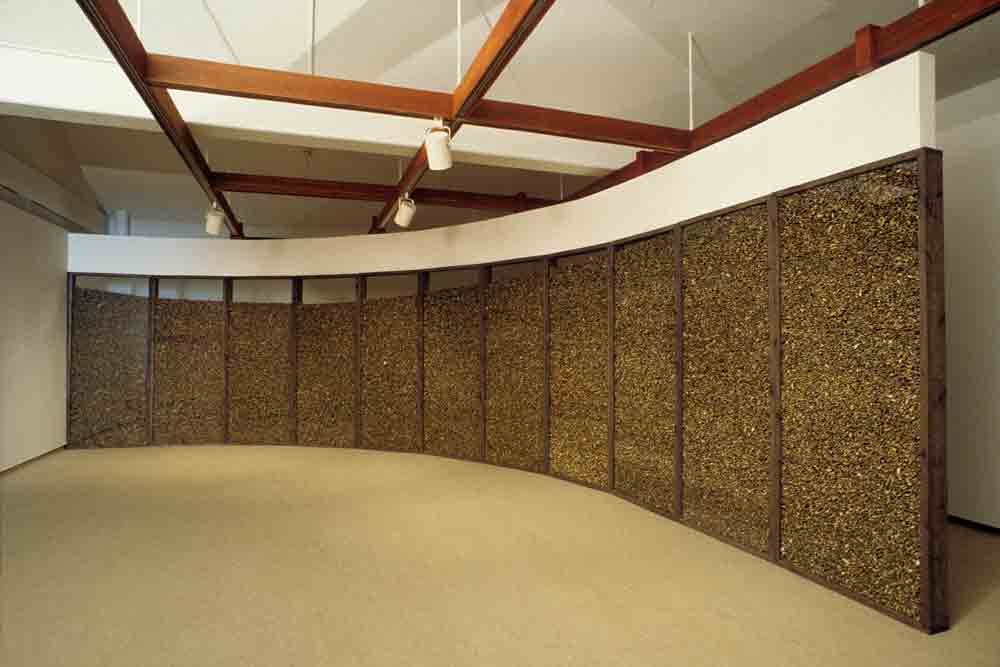
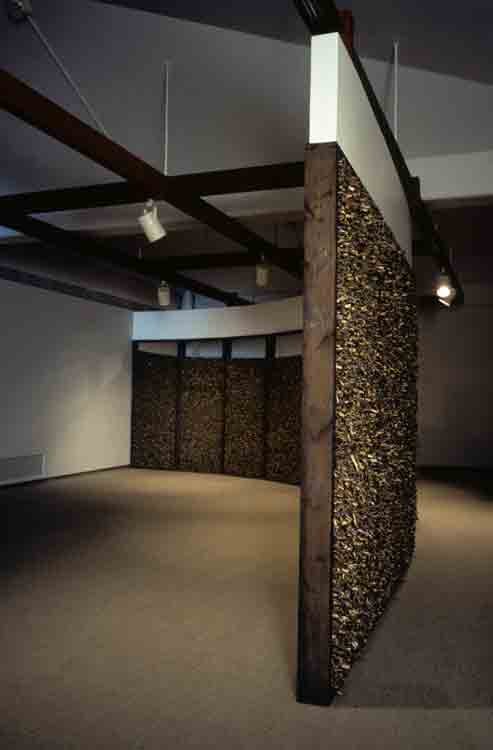

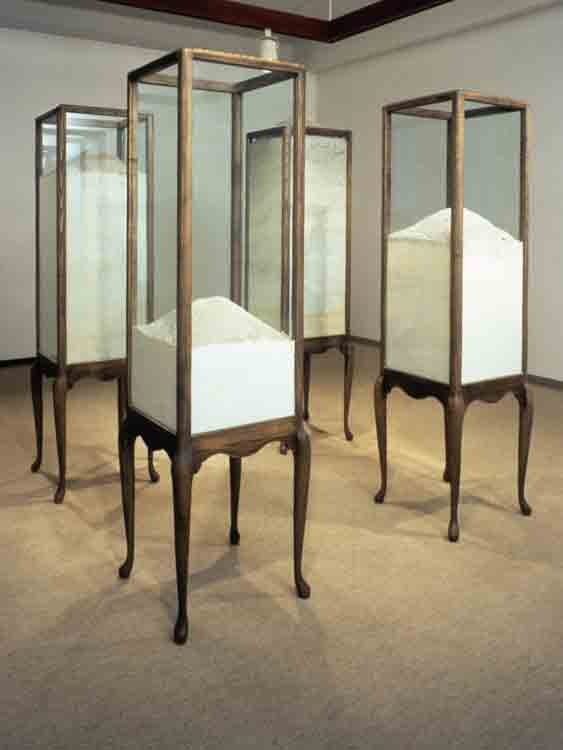
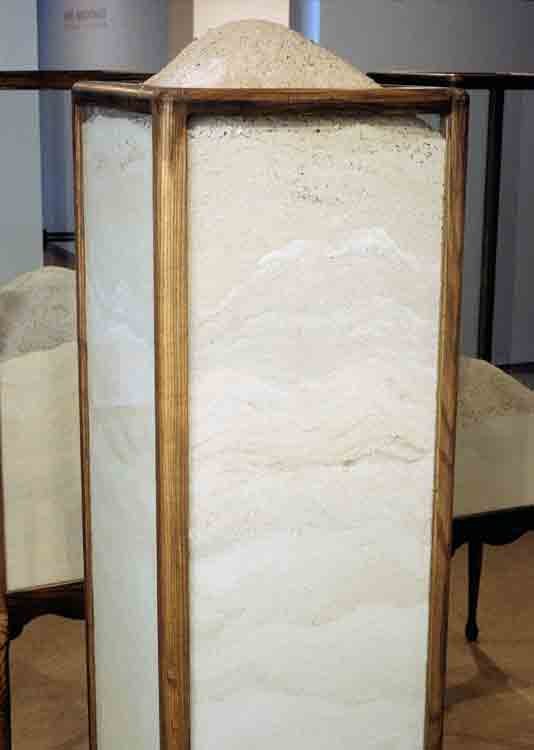
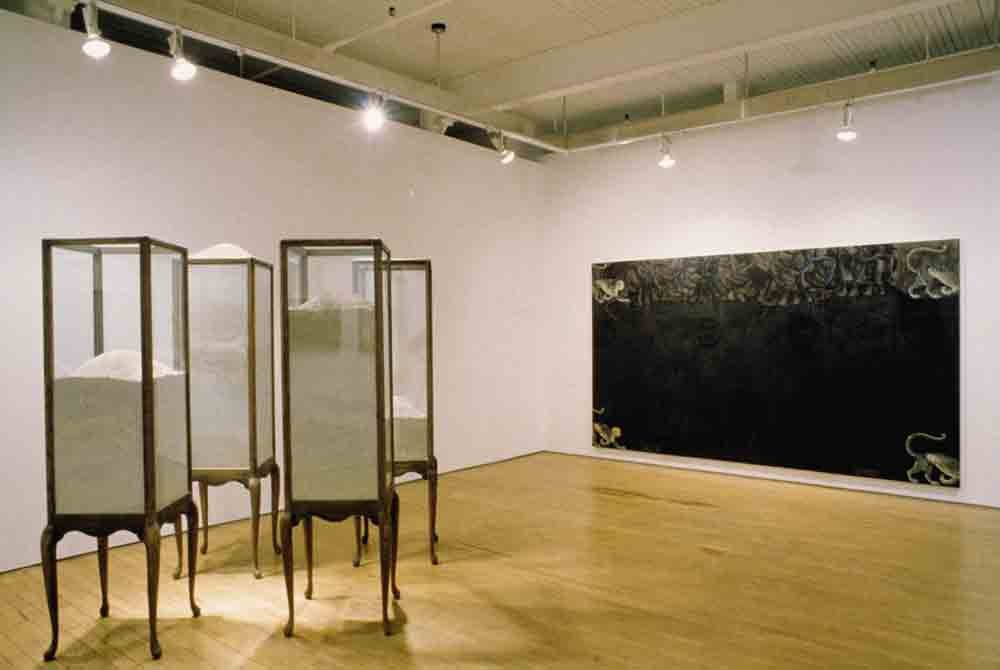
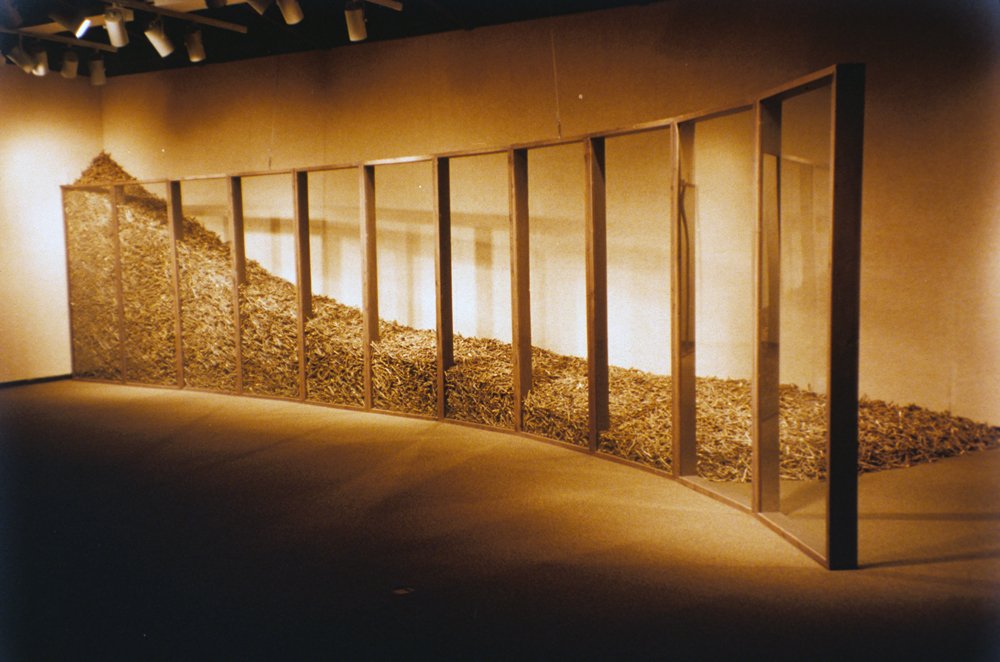
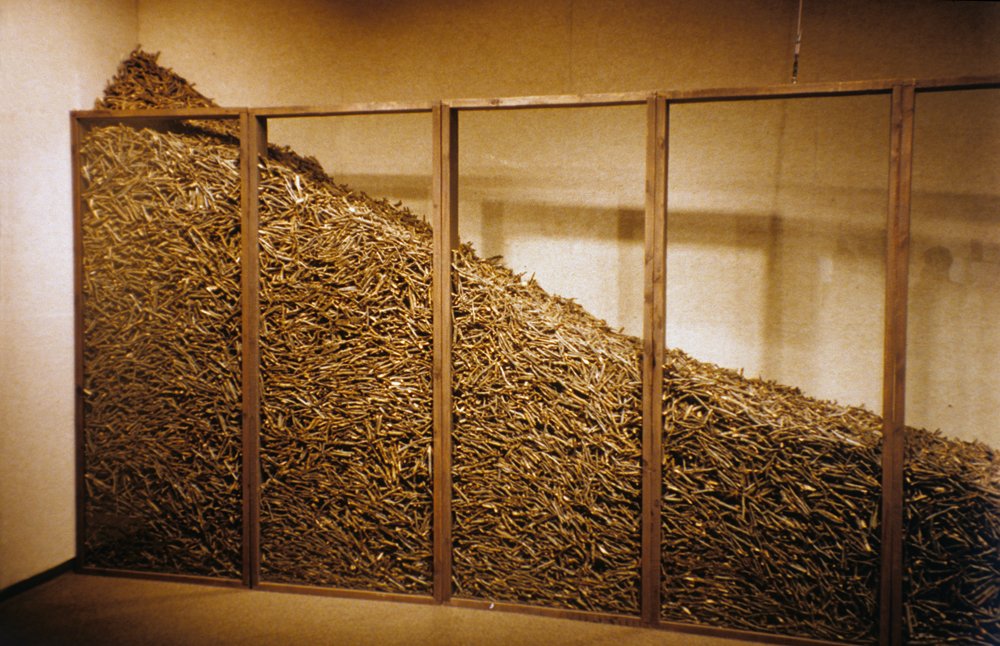

Photo credit: Grant Kernan (hibernaculum)
materials: wood, ash, glass
Solo Exhibitions:
deluge, Art Gallery of Algoma, Sault Ste. Marie, ON 1999
hibernaculum, Mendel Art Gallery, Saskatoon, SK 1995
Selected Work in Group Exhibition:
“ash cabinets,” Mercer Union Gallery, Toronto, ON in Natured exhibition, 1995
Publications:
Joan Borsa, “Susan Shantz: hibernaculum,” Mendel Art Gallery, 1995 + link to pdf
In both elements of this installation (the wall and the glass cabinets), cycles of natural systems are superimposed upon the traces of the artist’s labor as if to both acknowledge and challenge the boundaries between processes belonging to nature, daily existence and art. The situations of preparation, the passage of time and the processes and activities the artist has engaged in in the making of the art are as evident as the installation itself… In hibernaculum we are placed inside the context of remaking some form of dormancy or darkness. The wall suggests two distinct states of being – one more remote and controlled, the other more alive and vibrant … the front side echoing more institutionalized art expectations, the back or “other” side like the unorthodoxy of a self-trained perspective. But as the “wrong” or back side fans out, making its presence more pronounced, the front side curves inward as if the wall is turning itself “inside-out”, expelling the limits of its own boundaries.
Claire Christie, “Natured” Mercer Union, 1995 + link to essay pdf
Susan Shantz’ hibernaculum combines the social and the natural to foreground archaic ritual within a constructed social order. Four pedestal cabinets are arranged in a square formation, each glass case filled with varying portions of wood ash. The configuration suggests a cycle of life and death, alluded to through the progressive accumulation of ash from one cabinet to the next. The metaphor of the hibernaculum – a protective habitat for plant and animal life – implies conservation, and a kind of elevated memento mori is represented here by both container and contained. Preserved is the cabinet with its refined wood. Sacrificed is the burnt wood ash. Recorded is human intervention, and an equation of dependency qualifies our relationship to nature, signifying both civilization and survival.
Sandra Gregson, “Natured” Mercer Union, 1995 + link to essay pdf
Susan Shantz’ hibernaculum are body-sized curio cabinets built of ash wood and filled with ash, the residue from burning wood. They are sites of exchange and confusion: what is alive or dead, inside or outside, container or contained, nature or culture, form or substance. They appear empowered with potential.
Mike King, “Art and the Post-secular,” with image of hibernaculum (twig wall) http://www.jnani.org/mrking/writings/post2000/ArtPostsecularFull.htm